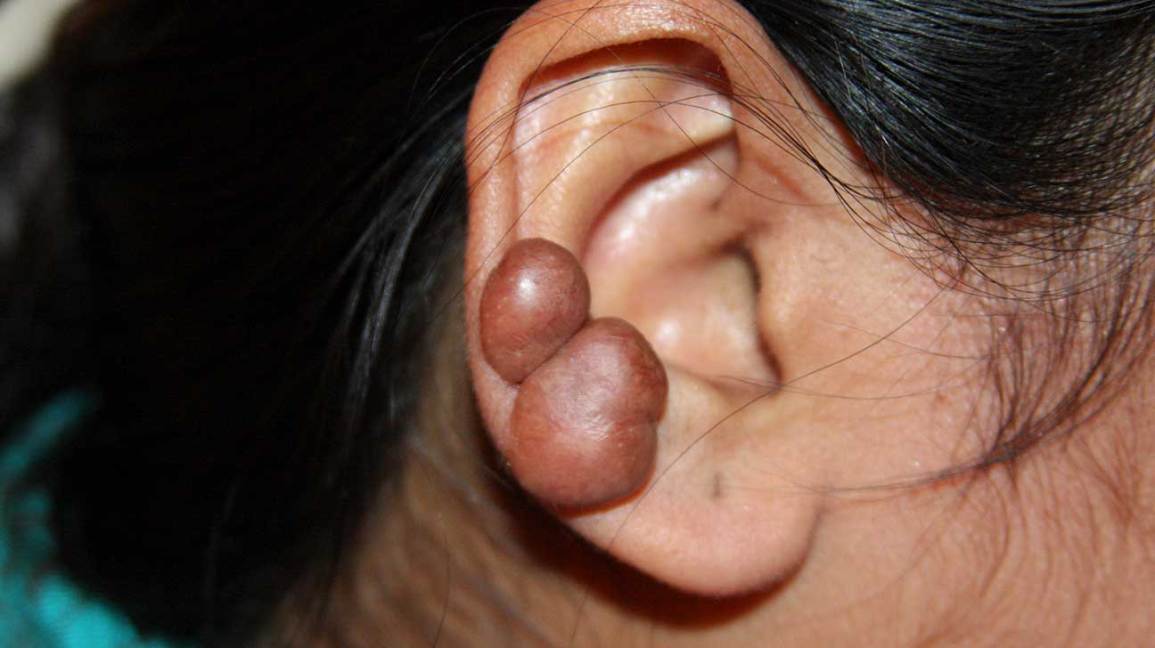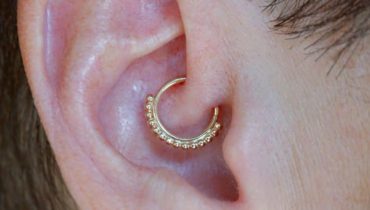Piercings can become a life-changing experience for you. Not only it changes your overall appearance but also it showcases the edgy side of your personality. Most people possess an absurd obsession with piercings that they do not mind to pierce any part of the body. It seems fun and adventurous until you develop keloids on the pierced area. Whether it is your ears, nose, lips, or another part of your body, keloids are likely to develop everywhere. This condition can become alarming, therefore, learning about how to protect piercings from keloids sound a smart idea.

What is Keloids?
Contents
A keloid is an overgrowth of the scar tissue in the result of trauma to your skin. Keloids are quite common after ear piercing. This overgrowth of scar tissues can occur on both the cartilage and lobe of your ear. Moreover, the development of keloids varies in every case. The shape of every keloid is also distinct. Most of the keloids scars are light pink in color whereas other appears quite darker than your skin color.
Keloids and Piercings
Piercing your ears is not a serious injury but your body sees it distinctively. In the process, when a wound heals, fibrous scar tissues begin replacing old skin tissues. Sometimes this replacement contributes to the excess production of scar tissues, which ultimately result in unpleasant keloids.
Moreover, this extra tissue spreads from the original wound and forms a bump or small mass, which always appears visibly larger than the original piercing.
Keloids on the ears typically appear as a small round bump around the piercing site. You may find them developing quickly but it is common for a keloid to appear after weeks or months of piercing. The size continues to grow for the next few weeks.
How to Remove Keloids
Not only keloids are difficult to eliminate but also they reappear even when removed successfully. It is worth noting that there is no sure-fire way to get rid of the condition completely. The treatment whether surgical or nonsurgical can minimize the appearance via shrinking keloid’s size. The possibility of its reoccurrence would still be there.
Take note that everyone has a different body type. Therefore, the treatments might show result distinctively on each body. You should not expect the desired outcome only after trying the one method as it is a time-consuming process.
In addition, if one treatment is not working, you should try another treatment. In addition, you will find the one and useful way eventually with the help of your dermatologist. Dermatologists recommend opting for a combination of treatments to get rid of the keloids completely.
Following are some of the useful surgical and nonsurgical treatments such as:
Surgical Remove
Skin experts often suggest a surgery to remove keloid from your ear via a scalpel. This method is likely to create a new wound, which develops a keloid later as well.
Radiation
Radiation treatment seems effective when it comes to reducing the size of a keloid. Dermatologists opt for it following a surgery.
Pressure Earrings
If you go for surgery to have the keloid removed, your dermatologist may suggest wearing a pressure earring after the surgery. You can wear these earrings to create moderate pressure on your ear to prevent the reoccurrence of keloid after the surgical treatment.
Non-Surgical Treatment
If you are not comfortable with the surgical treatments, you can always go for nonsurgical ones. These treatments might not remove a keloid completely but these options will certainly shrink the size of keloid significantly.
Retinoid Creams
Your dermatologist will prescribe a retinoid cream, which will help reduce the size and appearance of the keloid alike. You will also notice reduced itchiness, which keloids often bring.
Corticosteroids and Injections
Skin experts inject medicines into a keloid not only to shrink the size, but also to make it soft, and relieve symptoms. It may take three to four weeks to improve your condition. A study, in this context, suggests that treating keloids with injections can delay the reoccurrence of a keloid up to five years.
Ligature
A ligature is a surgical-thread that dermatologist tied around the large keloids. The thread will allow keloid to fall off. However, you will need a new thread after every three or four weeks until the keloid falls off from its place.
Cryotherapy
In the therapy, the experts freeze the keloid. The cryotherapy works best when combined with the treatments like steroid injections. Your dermatologist will recommend three or four sessions depending on your condition.
Laser Treatment
Laser Treatment comes in handy when it comes to shrinking the size and fading the color of keloids. Like other methods, laser treatment can provide best and lasting results when using in combination with other treatment or therapy.
Home Remedies to Get Rid of Keloids
If the thought of using injections and needles to remove keloids via surgeries scares you, you should go for nonsurgical methods to get the desired results.
Here a few you can try.
Garlic Extract
The root vegetable, garlic seems like a natural way to treat keloids. The extract contains soothing and healing properties that can help shrink the size of the keloid. However, wash it off immediately, if it causes itchiness or irritation.
Silicone Gels
Dermatologists suggest that using silicone gels cannot only improve the texture of a keloid but fade the color of it, in no time. Various studies conducted on the effectiveness of silicone on keloids revealed that applying a pea-size amount of the gel on the affected area flattens a keloid significantly. The silicone gels can also impede the reoccurrence of keloids on the similar part of your body.
Onion Extract
The extract of onions is potent enough to shrink the size after using it for some time. However, in case of irritation or swell, consult your skin specialist, first.
Skin Ointment
Skin ointment or products containing vitamin E, petrolatum, or lanolin can enhance your condition. If you use the skin cream or lubricant on a daily basis, keloid will begin healing.
How to Prevent Keloids
Treating a keloid can become a tough nut to crack. Therefore, it is better to take precaution in this context and to prevent the onset of keloids in the first place.
- If you have encountered an ear keloid before, try to avoid frequent ear or other piercings.
- Use a silicone patch or gel after every piercing to impede the occurrence of painful keloids.
- If the skin around your thickens immediately after piercing, do not wait and visit your doctor to get a pressure earring to prevent the development of keloid.
- If your family has a history of keloids, ask your dermatologist to conduct a test on the particular areas where you intend to get a piercing.
- Take extra care of new piercings keeping the area clean. It will ultimately reduce the risks of keloids.
- You can consider various essential oil to treat a keloid such as avocado oil. These oils will provide moisture to scar tissue making them less prominent.
- It is common to develop a keloid on the back of your earlobe after ear piercing. It occurs due to metal backs of the earrings. Try not to use metal backs immediately after piercing to impede keloids.
How Keloids Occur?
It is highly likely that anyone can develop mild to severe keloids. However, some people are at higher risks due to certain factors such as:
Genetics
Suffering from keloids, whether once or more time in your life, depends on your genetics. If you have a family, there are significant chances you will develop one or two keloids.
Age
You will not believe it but keloids are only common in individuals aged 30 or under.
Skin Color
Like age, your skin color can contribute to the condition. You should opt for safety precautions if you possessed dusky to dark skin color.
Useful Tips to Protect Piercings
Piercers often recommend taking extra care of your piercings to ward off keloids. You can opt for the following steps:
Mouth Piercings
If you have a cheek, lip, tongue pierced use alcohol-free antiseptic mouthwash after each meal and before the bedtime. Use a soft-bristled toothbrush to keep bacteria at bay. Moreover, take mouth piercing off once in a day and clean thoroughly.
Skin Piercings
To maintain pierced skin, you should use soap and water twice a day to keep the area clean. Be sure to wash your hands before touching the pierced area.
Do Not Touch Your Piercings
Avoid touching and twisting your new piercing. Make sure to keep clothing away from the area. Excess rubbing and friction create skin irritation, which often leads to keloids development.
Bottom Line
No question keloids on piercing bring irritation or itchiness and appear unattractive. Although you can find various treatments to get rid of the keloids, the scar tissue can reappear after months or weeks. Therefore, practice preventative steps to alleviate the onset of keloids after piercings. We suggest consulting your dermatologists if you have developed a keloid to get the right treatment on time.
![5 Reasons to Get a Smiley Piercing [with 75+ Pictures] 5 Reasons to Get a Smiley Piercing [with 75+ Pictures]](https://www.wildtattooart.com/wp-content/uploads/2019/04/smiley-piercing-63.jpg)
